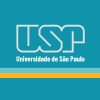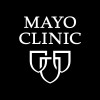
Transversus Abdominis and Pelvic Floor Muscle Strengthening Exercise Program In Patients With Grade...
Disability PhysicalUrinary Incontinence1 moreCystocele, a protrusion of the bladder, happens while the bladder descends into the vagina. There are more than one underlying causes for the development of cystocele ensuing in weak point of the muscles and the connective tissue surrounding the bladder and vagina. This study will be a randomized clinical trial. After the department permission of physical therapy data will be collected from patient of Jinnah Hospital. Data will be collected before and after treatment. Randomization will be done by lottery method. Group A will be given pelvic floor strengthning exercises and goup B will be given transverse abdominas strengthning exercises. Each group will have 33 patients each. A 6-week physical therapy program will be planned. Group A will be given pelvic floor muscle strengthning exercise and the group B will given transverse abdominas exercises.Data will be entered and analysed by SPSS version 25.

The Effects of Vaginal Tampon Training Added to Pelvic Floor Muscle Training in Stress Urinary Incontinence...
Stress Urinary IncontinencePelvic Floor Muscle Training (PFMT) is the basis of conservative treatment in women with SUI. In systematic reviews, PFMT was recommended as a first option for treatment of SUI. The aim of PFMT is to improve sphincter activity and increase the support of bladder and urethra. Recommendations regarding the prevention and treatment of SUI with PFMT include Knack maneuver (the conscious contraction of the pelvic floor before and during the abdominal pressure increases); pelvic floor exercises to enhance the structural support and endurance of pelvic floor muscles; adding transversus abdominis contraction; and functional rehabilitation.It was reported that the progressive overload principle should be considered to improve the muscle strength and endurance. According to this principal, resistance against to movement, duration and/or frequency should be increased to obtain the optimal response. There are a lot of methods to run a muscle or muscle group based on the progressive overload principal. These are adding resistance or weight, increasing the duration and number of contraction, changing the type of exercise and the range of movement. In the literature, it was reported that special vaginal or rectal tools, vaginal cones or tampons might be used to establish resistance during the pelvic floor muscle exercises.the use of cones in a different way may provide extra benefit for patients: patients can be instructed to perform pelvic floor muscle contraction and try to pull the cone or the other tools out of the vagina. In this study, investigators preferred to use vaginal tampons since pulling the cone out of the vagina cause the elimination of the weight of the cone. Vaginal tampons are also sterile, hygienic, and single use. There is no study investigates the effects of vaginal tampon exercises in the literature. Therefore, the aim of this study is to investigate the effect of the vaginal tampon training adding to PFMT on symptoms of the urinary incontinence, the strength and the endurance of pelvic floor muscles and the quality of life.

Mirabegron Treatment on Patients With Overactive Bladder Syndrome in Taiwan
Urinary IncontinenceOveractive Bladder SyndromeThis clinical trial compared the therapeutic effects and adverse events (AEs) in overactive bladder (OAB) patients receiving different combination of mirabegron and antimuscarinics. Methods: This is a prospective randomized study. OAB patients received mirabegron 25 mg (M25) daily for one month (1M) and then were randomized as group 1: to continue M25, group 2: to mirabegron 50 mg, group 3: to shift to solifenacin 5 mg (S5) and group 4: to combine M25 and S5 for further 2 months (totally 3 months, 3M). Efficacy and AEs were evaluated. At the end of 3M, the preferred option for future treatment was investigated.

Cycling Versus Continuous Mode in Neuromodulator Programming
Urinary IncontinenceUrgeThe investigators objective is to compare patient outcomes as changes in validated symptom measures of overactive bladder, the Overactive Bladder Questionnaire Short Form (OABq-SF) symptom scale, between women who are set on cycling versus continuous programs for their neuromodulator. Specifically, the investigators propose to perform a randomized double blind crossover study in women who are successfully treated with neuromodulation to either continuous or cycling mode on the modulator and compare differences between groups on the validated OABq-SF symptom questionnaire. In addition, the investigators will compare differences in urinary frequency and pad counts between women randomized to cycling versus continuous stimulation as measured by a 3 day voiding diary. This investigation will provide evidence-based guidelines for neuromodulator programming.

Effect of the Pelvic Floor Training in Postmenopausal Women With or Without Hormonal Therapy
Weak; Pelvic FloorWeak; Muscle1 moreThe purpose of this study is to evaluate the effect of pelvic floor muscle training (PFMT) on muscle function of postmenopausal women using or not using hormonal therapy replacement (HTR). The study will evaluate also the prevalence of urinary incontinence reports, its severity and impact on quality of life.

Treatment of Urinary Incontinence in Women With Spinal Cord Injury
Spinal Cord InjuryUrinary IncontinenceThe purpose of this study is to determine whether pelvic floor muscle training (PFMT) and intravaginal neuromuscular electrical stimulation (NMES) are effective in reducing urinary incontinence and improving quality of life in women with spinal cord injury (SCI).

Comparison of Burch Urethropexy and Mid-urethral Sling Performed Concomitantly With a Sacral Colpopexy...
Urinary IncontinenceI. Specific Aims Pelvic organ prolapse is a common and distressing condition that is frequently associated with stress urinary incontinence (SUI) and often requires surgical repair. Abdominal sacral colpopexy is the preferred operation for repairing pelvic prolapse. As many as 91% of women with pelvic organ prolapse undergoing sacral colpopexy also experience SUI. In addition, up to 44% of previously continent women develop SUI incontinence after sacral colpopexy: perhaps because a sacral colpopexy may predispose to opening of the bladder neck if secured too tightly. The selection of a surgical procedure to prevent and manage SUI in women undergoing sacral colpopexy is empiric rather than evidence-based. Conceptually, a mid-urethral sling may be more effective than a Burch procedure for preventing urinary leakage because a sling provides outlet resistance beyond the bladder neck and therefore it may compensate for a downward tension on the bladder neck resulting from the sacral colpopexy. Indeed, clinical observations suggest that a mid-urethral sling is effective among women who have persistent urinary incontinence after sacral colpopexy with a Burch procedure. Therefore, the investigators' global hypothesis is that a mid-urethral sling is preferable to a Burch procedure for preventing and improving stress urinary incontinence in women undergoing sacral colpopexy for pelvic organ prolapse. The investigators' SPECIFIC AIMS are to evaluate objective and subjective outcomes at 6, 12 and 24 months in 124 women with urinary incontinence and advanced pelvic organ prolapse. All women will be undergoing a sacral colpopexy and will be randomized to either a Burch procedure or a mid-urethral sling. The primary endpoint is composite continence at 6 months while secondary endpoints will include composite continence and subjective measures of incontinence, patient satisfaction and morbidity associated with these procedures. The investigators' hypotheses are as follows: At 6 months, urinary continence rates will be higher after a mid-urethral than after a Burch procedure. Urine continence will be assessed by composite measure of incontinence: no subjective complaint, no interim treatment, and negative standardized stress test performed by a masked observer. This assessment will be repeated at 12 and 24 months post-operatively to establish the medium term continence of the two procedures. Subjective continence and patient satisfaction measures will be obtained at each of the above visits using standardized questionnaires and pelvic organ support will be quantified by Pelvic Organ Prolapse-Quantification (POP-Q) scores. Early events (e.g., blood loss, operative time, intra-operative complications (vascular, bowel and urological injuries), in-hospital complications (need for transfusion, febrile morbidity, thrombotic events, wound infection, length of stay, duration of bladder catheterization and ileus) and delayed postoperative complications (e.g., wound infection, mesh erosion, bowel obstruction and obstructed voiding) will be collected to compare the safety of each procedure.

A Post-Market Study of the AMS AdVance™ Male Sling System for the Treatment of Male Stress Urinary...
Stress Urinary IncontinenceA prospective, multi-center study of the AdVance Male Sling for Stress Urinary Incontinence. The purpose of this study is to obtain surgical technique data for use in physician education and training and to collect early clinical outcomes data for future publication. This study is not designed to statistically demonstrate safety and efficacy of the device.

The Altis® Single Incision Sling System for Female Stress Urinary Incontinence Study
Stress Urinary IncontinenceAn international, multi-center, single arm, prospective clinical study designed to assess the safety and efficacy of the Coloplast Altis single incision sling system for females with stress urinary incontinence (SUI).

Anticholinergic vs. Botox Comparison Study
Urge Urinary IncontinenceOveractive BladderUrinary incontinence is a prevalent condition that markedly impacts quality of life and disproportionately affects women. Overactive Bladder syndrome (OAB) is defined as symptoms of urgency and frequency with urge urinary incontinence (OAB-wet) and without urge incontinence (OAB-dry). Conservative first line treatments for urge incontinence combined with other OAB symptoms (OAB-wet) include behavioral therapy, pelvic floor training +/- biofeedback, or the use of anticholinergic medications. These treatment modalities may not result in total continence and often drug therapy is discontinued because of lack of efficacy, side effects and cost or because of not wanting to take a pill. Behavioral therapy and pelvic muscle exercises require consistent, active intervention by the patient which is often not sustained. Thus, the objective of the Anticholinergic vs Botox Comparison Study (ABC) is to determine whether a single intra-detrusor injection of botulinum toxin A (Botox A®) is more effective than a standardized regimen of oral anticholinergics in reducing urge urinary incontinence. The null hypothesis is that there is no difference in the change from baseline in average number of urge urinary incontinence episodes over 6 months between groups.
